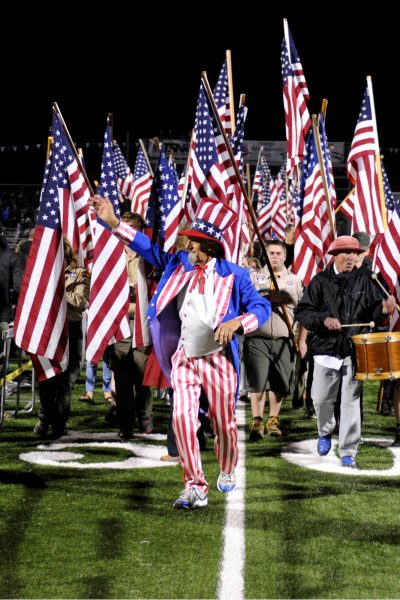I Have a New Dream
Over the past few weeks, there have been three incidents at three different high schools, Desert Vista High School in Phoenix, Arizona, St. Ignatius College Prep. in San Francisco, California, and our very own Analy High School. The reactions to these incidents have caused a huge discussion on how to resolve the issues at hand. As a society, we agree that anything racist should be dealt with, but deciding on the methods to do so is what causes the division within society and prevents us from advancing.
In the first case at Desert Vista High School, it was their senior class photo day when more than 700 seniors lined up for a panoramic class photo. It is a traditional event and common for students to wear shirts that spell out phrases. During that day a Snapchat went out with six girls spelling out the n-word with an asterisk in the middle. The photos went viral on Twitter and Facebook by late afternoon, where many people, including parents of Desert Vista students, thought that the photo was racist and asked for the students to be suspended or expelled. “They do not represent the high school or the community as a whole. These are six students who made a really bad decision. They do not reflect the rest of the student body, the 3,100 other students that go here, staff that work here or anyone in our district,” Jill Hanks, executive director of community relations for Tempe Union High School District, said. “The girls are going to face disciplinary action,” Hanks added, although she said she couldn’t share what that would be.
The second case was at St. Ignatius College Prep. where 14 students were suspended after they took part in a party with a racist theme. “It is contradictory to who we are and what we want to be,” St. Ignatius College Preparatory Principal Patrick Ruff said. He spoke Thursday after suspending 14 students for attending a so-called “wigga” party. “Wigga” combines the word white with the n-word. “Students were dressing in clothes that were inappropriate and appropriated the worse of black culture and it’s a gathering that simply we cannot tolerate and will not tolerate,” Ruff said. According to Ruff the student body population currently consists of 55 percent identified as white or caucasian, with African American students consisting of only five percent of the student body. There were students from at least five high schools at this party, but St. Ignatius College Preparatory is the only one that went public.
The last incident was here at our very own Analy High School. The incidents occurred over a timespan from Aug. 2013 – Aug 2015 with several different students. One event involved a former Analy student who did not enroll again at the school this year. The student had posted a meme on Instagram that another student found offensive which lead to argument in which the alleged perpetrator says that he is a white supremacist. This event led to the offended student transferring to a different school and having him and his parents file a 21-page report to the site admin for not punishing any of the alleged perpetrators. According to the article in the Press Democrat the report is ready to be sent out to about 20 recipients in federal departments of education and civil rights, to the county Board of Supervisors and educators, the ACLU and NAACP representatives, the county Human Rights Commission, and local and state legislators. Within these three events, one major point is repeated over and over again which is that the perpetrators do not reflect the rest of the student body, the staff, or anyone in the district. I agree that this is the key to understanding why society is divided. If we stop labeling one group as something they’re not, then we will have taken an important step in accepting others and moving forward. The second relation between these articles is that every school responded differently, whether it be though disciplinary action, a suspension or, a movement for change in school policy. Though this change is good, I believe there could have been a different form of response in all these events that could prevent this from happening again.
For me, the issue of racism is very personal. Having a Caucasian mother and an African American father has resulted in problems that people still don’t understand. I still get asked, “If you’re Biracial, then why isn’t your skin black?” This is why we need to move forward as a society, so people can understand each other and then, together, we can fix it. As Martin Luther King Jr. once said, “I have a dream that my four little children will one day live in a nation where they will not be judged by the color of their skin but by the content of their character.”



